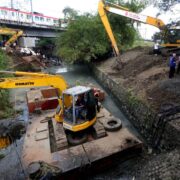BIZ BUZZ: Cebu Pacific copes with Naia curve balls

The mandatory phaseout of smaller turboprop aircraft to make Ninoy Aquino International Airport (Naia) a more efficient gateway started in March with mixed results for Gokongwei-led budget carrier Cebu Pacific.
But there have been upside surprises since then, Cebu Pacific president and chief commercial officer Xander Lao said in a press chat with editors.
“Clark-El Nido, which we were not expecting to do well, did quite well,” Lao noted.
This follows their acquisition of AirSwift, which enjoys a monopoly in this route.
Even so, some of the less touristy turboprop destinations are seen gaining ground.
“Masbate, which we transferred from Manila to Clark, started slow but is now starting to pick up,” Lao said.
“I guess from your perspective, if you had a choice to go to Manila or Clark, obviously your preference will be always be Manila. But once most of the turboprops are out, or once all of the tuboprops are out, we don’t expect them to slack off,” he said.
Today, tourists flying to Siargao still have the choice between Manila and Clark. By October, all Cebu Pac flights to the surfing hot spot would have to move out of Naia in compliance with the phaseout order (30 percent of capacity starting March and 70 percent by October).
“If anything, what we might miss will be international to domestic connectivity,” Lao said.
This means that international travelers arriving at Naia will still have to travel by road to Clark to fly to El Nido, Siargao, or other turboprop destinations.
On a positive note, Lao noted that commuting from Manila to Clark isn’t as challenging as five or six years ago, with shuttle services now a standard offering.
“It’s pretty comfortable commute. Even our corpcomm (corporate comm) guys tried it,” he said.
Exempted from the phaseout this year are carriers with five turboprop planes or less. They won’t have to move out until March 2026.
But over the long run, the solution will be to execute plans to develop local regional airports to be jet-capable, Lao said, noting that the international gateways in Hong Kong and Singapore indeed don’t have turboprop operations.
“Once Siargao becomes jet-capable we’ll be happy to put jets there,” Lao said. The increase in capacity should also lower prices for consumers, he said.
“Pricing is high [today] because we’re using turboprops. We can only distribute the cost over 78 seats as opposed to distributing the cost over 230 seats. [Jet] economics makes sense,” he said.





















